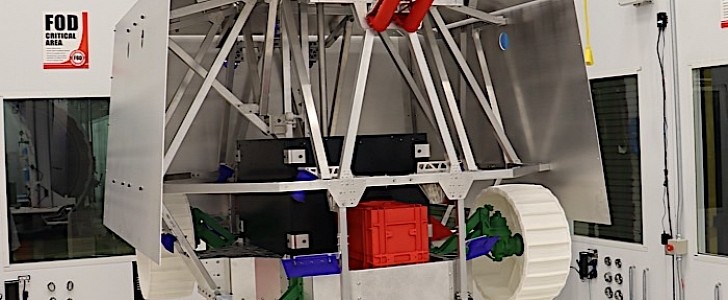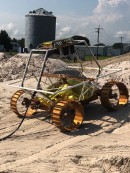When humans go to the Moon once more by the end of this decade, they’ll have to have quite a large number of hardware with them, to help with the bold exploration and even colonization goals we’ve set for ourselves. And one very important such piece of hardware is a water-hunting rover.
NASA calls it Volatiles Investigating Polar Exploration Rover or VIPER, and it should be a machinery capable of looking for signs of water in the same location where astronauts are scheduled to land in 2024, the lunar South Pole.
The mission is scheduled to depart in 2023, meaning there is still plenty of time to get the hardware right. Even so, the space agency’s engineers are hard at work and have already started work on a full-scale prototype for the rover.
As per the info now available, VIPER is the size of a golf cart and incorporates wheels, lights, a drill, and cameras, among others. In the end, some 100 parts come will together to form a machine that weighs 600 pounds (272 kg).
What you can see in the gallery above is a VIPER prototype called Surface Segment Assembly Pathfinder, currently being put together in a cleanroom at the Johnson Space Center. You can have a time-lapse look at how that’s going in the video attached below.
"This pathfinder exercise allowed us the opportunity to make sure we have all the skills, tools, and accommodations in-place for VIPER's flight-build, when keeping the pace will be especially critical,” said in a statement David Petri, VIPER’s system integration.
“Every detail counts, and this process helped reveal where the VIPER team could refine key design aspects to ensure a smooth build.”
Now that these initial tests have been performed, the rover will move into the Critical Design Review, the final step before the manufacturing of parts and other hardware needed for the mission will begin.
The mission is scheduled to depart in 2023, meaning there is still plenty of time to get the hardware right. Even so, the space agency’s engineers are hard at work and have already started work on a full-scale prototype for the rover.
As per the info now available, VIPER is the size of a golf cart and incorporates wheels, lights, a drill, and cameras, among others. In the end, some 100 parts come will together to form a machine that weighs 600 pounds (272 kg).
What you can see in the gallery above is a VIPER prototype called Surface Segment Assembly Pathfinder, currently being put together in a cleanroom at the Johnson Space Center. You can have a time-lapse look at how that’s going in the video attached below.
"This pathfinder exercise allowed us the opportunity to make sure we have all the skills, tools, and accommodations in-place for VIPER's flight-build, when keeping the pace will be especially critical,” said in a statement David Petri, VIPER’s system integration.
“Every detail counts, and this process helped reveal where the VIPER team could refine key design aspects to ensure a smooth build.”
Now that these initial tests have been performed, the rover will move into the Critical Design Review, the final step before the manufacturing of parts and other hardware needed for the mission will begin.














